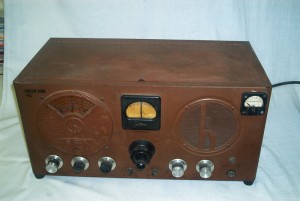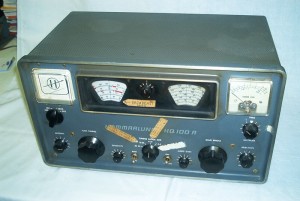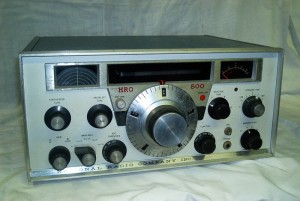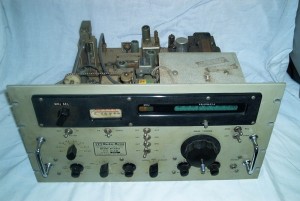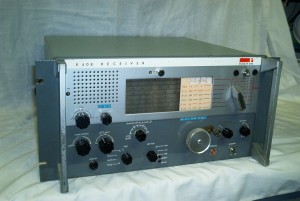Radio receivers are as old as radio itself. After all, radio signals had to be intercepted and converted into an intelligible form to be useful.
At first the signals transmitted and received were Morse code (radio telegraphy). Fittings aboard ships were mandatory in the first decade of the 20th century (1900's). But hours of watch were not prescribed.
The Titanic disaster (1912) changed that. A ship was an hour away but did not hear the Titanic's distress call. A ship that did hear the distress call was more then three hours away, but rushed to the scene. By then, the titanic had sunk with great loss of life.
Voice transmissions (radio telephony) came into use in the 1920's. A frequency was set apart for calling and distress. Quiet times were prescribed to enable listening for distress calls.
Hallicrafters – S22R
Manufactured by: Hallicrafters
Model: S22R
Hallicrafters – SX-62A
Manufactured by: Hallicrafters
Model: SX-62A
Power Requirements: 115VAC
Frequency Range: 0.54-109MHz
Hallicrafters Co. – Super Skyrider
Manufactured by: Hallicrafters Co.
Model: SX-17
Power Requirements: 115VAC
Frequency Range: 0.55-61 MHz
Hammarlund – HQ100A
Manufactured by: Hammarlund
Model: HQ100A
National Radio Co. – HRO500
Manufactured by: National Radio Co.
Model: HRO500
Power Requirements: 117VAC / 12VDC
Frequency Range: 0.4-30 MHz
National Radio Co. – One Ninety
Manufactured by: National Radio Co.
Model: One Ninety
Marine Communications Receiver
Marine Communications Receivers are used in conjunction with transmitters. The receivers must be capable of receiving telegraph signals, amplitude modulated, single-side band, frequency modulated, frequency shift (used with facsimile and radio teletype).
ITT Mackay Marine – 3010C
Manufactured by: ITT Mackay Marine
Model: 3010C
Frequency Range: 0.07-30MHz
Redifon – R408
Manufactured by: Redifon
Model: R408
Frequency Range: 0.013-28MHz
